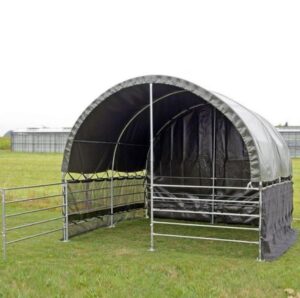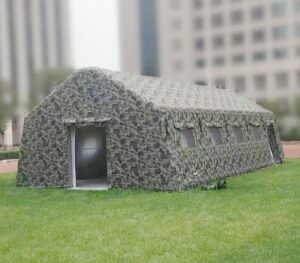Professional PVC Tarpaulin Solutions for Livestock
Tarpaulin tents provide robust weather protection and secure feed storage in the livestock industry, helping to improve animal health and productivity.
- Durable: Made of high-strength PVC, resistant to tearing and wear.
- Rain and moisture-proof: Ensures livestock and feed are protected at all times.
- Easy to install: Quick deployment to meet emergency or daily operational needs.
Tarpaulin tents provide sturdy shelters for cattle barns, sheep pens, pigsties, and poultry areas, shielding animals from harsh weather and improving farming conditions. They also protect feed storage, prolonging usability and supporting animal health and productivity.
The Best Solution for Protecting Livestock and Feed
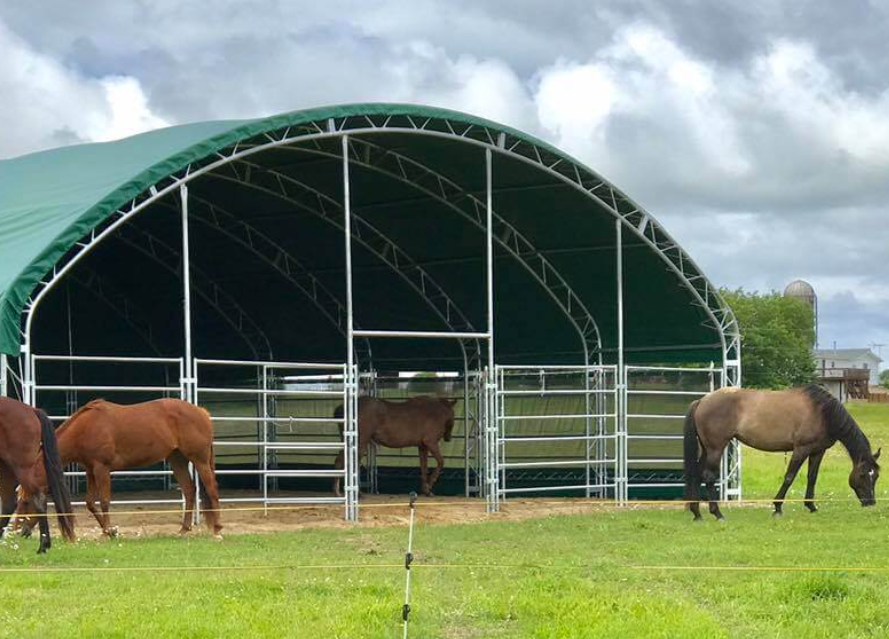
Key Concerns
Livestock Damage: Exposure to rain and snow can cause colds or frostbite, leading to higher veterinary costs.
Feed Deterioration: Hay and feed left in open-air storage can become damp and moldy, resulting in significant waste.
Insufficient Temporary Shelter: Sudden weather changes can leave livestock exposed, compromising their safety.
Solutions
Rain and Moisture Protection: PVC coating and flame-retardant design prevent rainwater penetration, keep feed dry, and reduce the risk of mold.
Temporary Shelter: Quickly erect livestock sheds or covered areas to withstand extreme weather and protect animal health.
Durable Support: With a weight of approximately 20 ounces per square yard, the tarpaulin is suitable for long-term outdoor use, reducing replacement frequency.
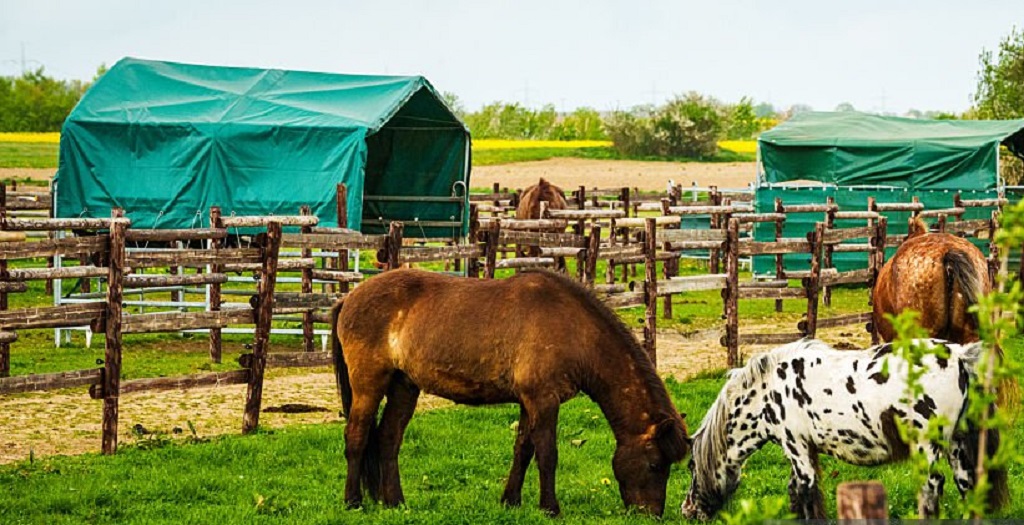
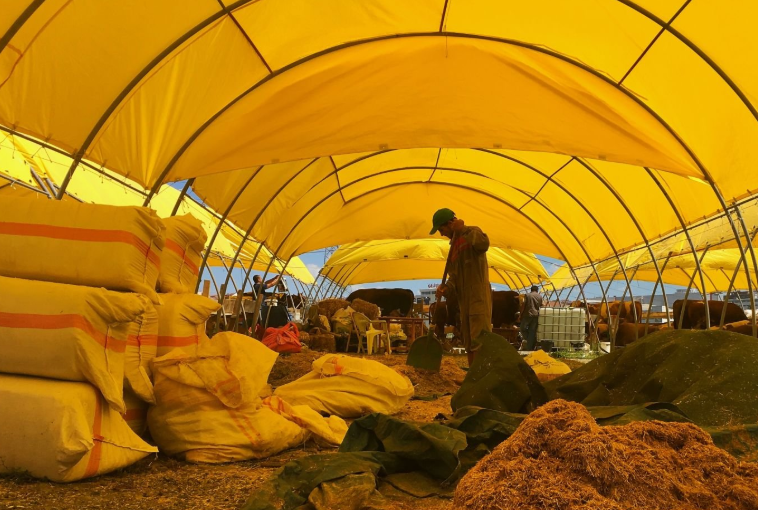
Product Features
- Durable material: Thickened PVC coating with a tensile strength of 250N, resistant to temperatures from -20°C to 60°C.
- Rain and moisture protection: Double-layer waterproof design and flame-retardant material meet safety standards, preventing moisture accumulation.
- Easy to install: Equipped with rust-resistant metal grommets and reinforcement ropes every 24 inches, allowing 2–3 people to complete installation within 20 minutes.
- Thermal insulation performance: Optional insulation layer provides warmth for livestock during winter.
- Custom sizes: Supports standard sizes of 16'x28' or 24'x28', with custom sizes available upon request.
Application Scenarios
- Tarpaulin Horse Shelter: Perfect for horse stables, providing protection from rain, snow, and strong winds, ensuring a comfortable environment for horses. Case: A ranch in the Pacific Northwest used the shelter to protect their horses during a stormy season, maintaining their well-being.
- Pigsty Cover: Designed to cover or extend pig enclosures, shielding piglets and sows from extreme weather for a healthier living space. Case: A farm in the Midwest applied the cover to their pigsty, improving overall pig health during a rainy period.
- Feed Storage Area: Ideal for hay, grain, or mixed feed stacks, preventing moisture and mold while preserving feed quality over time. Case: A livestock operation in Australia used the tarpaulin to store feed, keeping it fresh throughout the humid season.
Precautions
- Avoid installing or adjusting the tarp when the horse is active to prevent it from being startled and causing accidents.
- Check the edges of the tarp in the stable regularly to ensure that there are no sharp parts that can injure the horse.
- Keep ventilation to prevent moisture accumulation that affects the health of the horse, especially using insulation in winter.
- Keep horses away from the tarp when cleaning, and wash by hand with mild soapy water to prevent chemical residues.
Related questions
- Q1: Can the tarpaulin withstand horses trampling?
- A: The tarpaulin has a tensile strength of 250N, suitable for light trampling. It is recommended to avoid concentrated heavy pressure.
- Q2: What stable size is suitable for this tarpaulin?
- A: The standard 16'x28' size can cover a small stable, while 24'x28' suits 10–15 horses. Custom sizes are available for larger areas.
- Q3: How can horses be protected in winter?
- A: With insulation and windproof design, the stable temperature is maintained. It is recommended to reinforce the bottom to prevent cold drafts.

